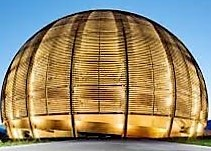Speaker
Description
Globular clusters are key grounds for models of stellar evolution and early stages of the formation of galaxies. Abundance anomalies observed in the globular cluster NGC 2419, such as the enhancement of potassium and depletion of magnesium [1] can be explained in terms of an earlier generation of stars polluting the presently observed stars [2]. However, the nature and the properties of the polluting sites are still debated. The range of temperatures and densities of the polluting sites depends on the strength of a number of critical thermonuclear reaction rates. The $^{30}$Si($p$,$\gamma$)$^{31}$P reaction is one of the few reactions that have been identified to have an influence for elucidating the nature of polluting sites in NGC 2419 [3]. The uncertainty on the $^{30}$Si($p$,$\gamma$)$^{31}$P reaction rate has a strong impact on the range of possible temperatures and densities of the polluter sites.
Hence, we investigated the $^{30}$Si($p$,$\gamma$)$^{31}$P reaction with the aim to reduce the uncertainties associated to its reaction rates by determining the strength of resonances of astrophysical interest. In this talk, I will present the study of the reaction $^{30}$Si($p$,$\gamma$)$^{31}$P that we performed via the one-proton $^{30}$Si($^{3}$He,$d$)$^{31}$P transfer reaction at the Maier-Leinbnitz-Laboratorium Tandem. Direct measurements, performed using the DRAGON recoil spectrometer at TRIUMF, will be presented as well.
The high resolution Q3D magnetic spectrograph was used to measure the angular distributions of the light reaction products. These angular distributions are interpreted in the DWBA (Distorted Wave Born Approximation) framework to determine the proton spectroscopic factor needed to deduce the proton partial width of the states of interest. For the direct measurements, the \ph recoils are detected in coincidence with the $\gamma$-rays emitted during the proton capture, which allows a direct estimation of the strength of higher energy resonances.
This information was used to calculate the $^{30}$Si($p$,$\gamma$)$^{31}$P reaction rate. The uncertainties on the reaction rate have been significantly reduced, and key remaining uncertainties have been identified [4].
References
[1] C. Iliadis et al., The Astrophysical Journal, vol. 470, p. 98, Feb. 2016.
[2] R. G. Gratton et al., The Astronomy and Astrophysics Review, vol. 20, p. 50, Feb. 2012.
[3] J. R. Dermigny and C. Iliadis, The Astrophysical Journal, vol. 848, p. 14, Oct. 2017.
[4] D.S Harrouz et al., Phys. Rev. C, vol. 105, p. 015805, Jan. 2022.




